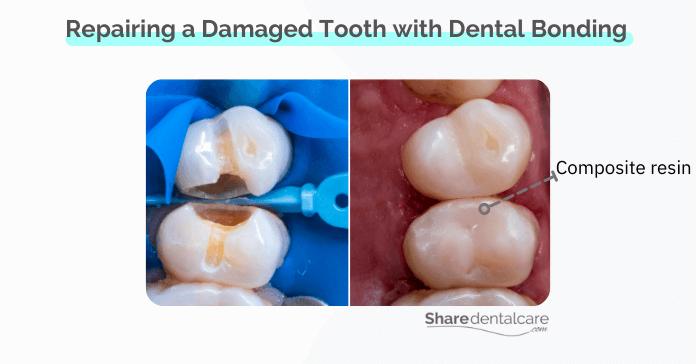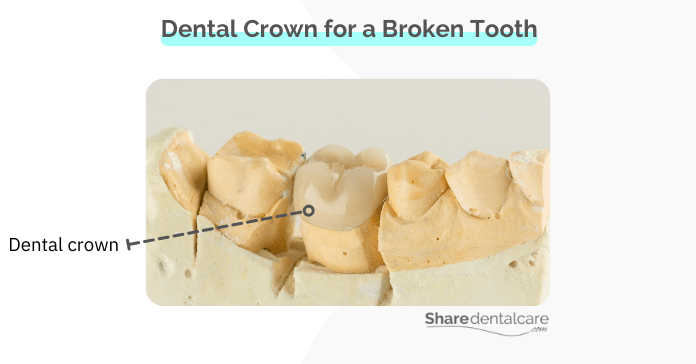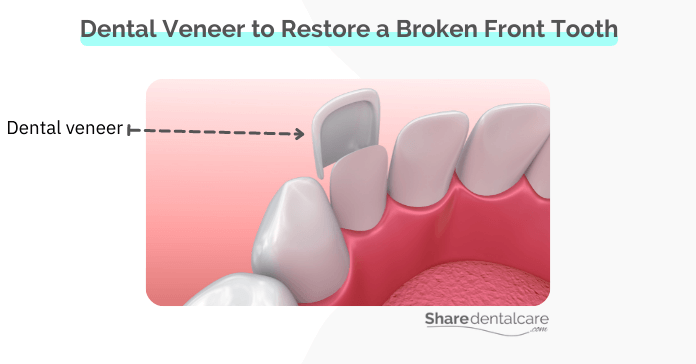Do you have a broken or chipped tooth? This is something that nobody likes to deal with. If you have a broken front tooth, it can be embarrassing to smile and laugh in public, which can affect your self-esteem. Also, broken teeth can cause chewing and biting problems, which may get worse over time. In this post, we’re going to discuss types of teeth covers for a chipped or broken tooth, and the pros and cons of each type.
What are Teeth Covers?
Teeth covers are dental restorations that cover broken or chipped teeth to restore their function and improve their appearance. Teeth covers for a broken tooth come in different designs, but they all serve the same purpose. They’re also made of different materials to match teeth’ color, texture, and shape. The choice between the different types depends on several factors, such as the tooth type or the size of the breakage.
Why Should You Get Teeth Covers for Your Chipped or Broken Tooth?
If you have a broken or chipped tooth, tooth covers can not only improve your teeth’ appearance but also protect them from further damage. Teeth covers can:
- Restore the chewing function.
- Restore the shape, size, and color of your teeth.
- Improve your smile.
- Provide strength to the tooth structure.
- Eliminate sensitivity caused due to chipping or breakage.
- Prevent further damage to your teeth.
- Improve your self-esteem.
Types of Teeth Covers for a Broken Tooth
There are different types of teeth covers for a broken tooth, and each of them has its own advantages and disadvantages. They come in different designs and materials that fit differently on broken or chipped teeth. The choice of type depends on several factors such as:
- Size of the damage (small fracture or a big piece that’s fallen off)
- What breaks your tooth (bruxism, trauma, or weak tooth after a root canal)
- Your tooth type (front tooth, back tooth, upper or lower teeth, etc).
Teeth Bonding
Dental Bonding is one of the fastest ways to restore chipped or broken teeth. The dentist uses a material called “composite resin” to cover the broken tooth. This is a tooth-colored material, and it’s placed on the chipped or damaged part of your teeth to restore teeth function, shape, and color. Once it dries out, you can bite and chew food as usual. The composite resin hardens with ultraviolet light.
- Pros of teeth bonding: the procedure is quick and easy to perform, as the material has a fast setting time. It is performed by a dentist in just one visit with an anesthetic. Also, it’s inexpensive when compared to other types of teeth covers for a broken tooth.
- Cons of teeth bonding: it’s not as strong as veneers, onlay, or crowns. Teeth bonding doesn’t last very long, from 3 to 10 years, depending on the size of the fracture and how you take care of it. So, it is not recommended for teeth with large damage.

Dental Crowns
Dental crowns, also known as caps, are the most common type of teeth covers for a broken tooth. These tooth covers are usually made of porcelain. They cover the entire tooth surface. Dental crowns are usually used to cover a weak or broken tooth.
Usually, it requires a week or two to get a porcelain crown. During this period, you may get a temporary cap for your broken tooth to protect it and prevent further damage.
- Pros of dental crowns: they are strong and durable. Dental crowns can last for 15 to 20 years, depending on how you take care of them. Also, they perfectly match the color and shape of your teeth. Dental crowns are less expensive than veneers.
- Cons of dental crowns: they are more expensive than composite bonding and require multiple visits to the dentist. Crowns require the reduction and reshaping of the tooth, so it is not recommended for teeth with small fractures teeth bonding is a better option in this case.

Read more about how dentists repair a chipped crown with exposed metal.
Dental Onlays
Dental Onlays cover only the broken part of the tooth, not the entire tooth like crowns. Onlays are made from composite resin material or porcelain that perfectly matches the color and texture of your teeth.
- Pros of dental onlays: they are also less invasive than dental crowns because there is no need for the reduction of the entire tooth. Onlays can last from 10 to 15 years, depending on oral hygiene.
- Cons of dental onlays: they are as expensive as crowns and more expensive than teeth bonding. Onlays cover only back teeth and are not suitable for broken front tooth.
Dental Veneers
A dental veneer is a thin cover made of porcelain (about 1 millimeter) that is bonded to the front side of the tooth to make it look better and covers a small broken area. Veneers are used to restore discolored, chipped, cracked, or broken front teeth
- Pros of dental veneers: they are less invasive than dental crowns to preserve your natural teeth as possible. Veneers can last up to 15 years, depending on the care you give them.
- Cons of dental veneers: they’re more expensive than other types of teeth covers for a broken tooth. Veneers are not recommended teeth with large damage. Also, they are not suitable for molars.

Factors You Should Consider Before Getting Teeth Covers
Teeth covers can be a perfect way to cover a broken tooth. There are several factors you should consider before choosing the type that best suits you, including:
- The condition of the tooth: it is the first factor you should consider. Teeth with extensive damage may need to be extracted and replaced with dental bridges or implants. Dental crowns are recommended for teeth with root canals.
- The size of the damage: if the damage is limited to part of your tooth, teeth bonding, onlays, or veneers are best suited for it. However, if the damage is large, crowns are recommended. If the tooth is severely damaged, your dentist may recommend a tooth extraction. Learn more about different types of teeth replacement.
- The location of the tooth: Onlays are only used for back teeth while veneers are not suitable for molars. Teeth bonding and crowns can be used for all teeth.
- Your budget and preferences: Veneers are the most expensive of all types of teeth covers for a broken tooth. Dental crowns may be cheaper but require the reduction of the entire tooth. Teeth bonding is less expensive, but it is not as durable as others; however, this does not mean you should avoid it.
Consult a dentist for more information on which type of teeth covers are suitable for you. He will take into consideration all the factors to determine what the best choice is for you.
Teeth Covers for a Broken Tooth – Conclusion
Do you have a broken or chipped tooth? There are several types of teeth covers that you can choose from to match your needs. Each type has its own pros and cons. Dental crowns are usually made of porcelain and cover all teeth surfaces while dental onlays only cover the damaged part of teeth. Teeth veneers can be used to restore chipped or broken front teeth but are not suitable for molars or teeth with large damage. Teeth bonding is more affordable than other options but less durable.
Your dentist will be able to help you decide which one is right for you after they take into account the size of damage as well as the condition of your tooth when making their recommendation.